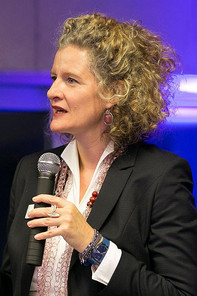Overview
Recommendations
Next Steps
Social media
Practical guideline for talent management in 4 steps
Listening to the Vienna Philharmonic Orchestra is something very special. It is undoubtedly one of the best orchestras in the world. And not without reason. But what makes it so outstanding? Certainly the fact that each and every one of its musicians is an exceptional talent in his or her own right. But even the best orchestra in the world cannot deliver a top performance unless everybody is given the room to unlock his or her full potential so as to make the most of his or her very individual talents and skills. The same applies to corporate talent management. Barbara Stöttinger, Dean of the WU Executive Academy, has identified 4 talent-management steps to motivate high potentials to both be their best selves and perform at their best on a regular basis.

More than 20 years ago, the world first heard of the “war for talents”. It was Steven Hankins who, in 1997, coined the term in a McKinsey study, referring to the increasingly difficult process of finding suitable candidates for important jobs. Since then, many have claimed that the battle for the best of the best is over, only to see it gain fresh impetus. In the age of digital transformation, it is back in full swing and a source of constant concern for businesses. Nowadays, talent management involves much more than employer branding, recruiting and employee retention. What is needed is a holistic approach.
This is because organizational talent management has long ceased to be a matter of just finding talents; rather, it is about bringing out the best in them. But how can this be done? In practice, some key aspects make all the difference in terms of whether or not talents will actually be able to unlock their full potential and perform at their best. From the board level to direct superiors, there needs to be awareness that talent alone is not enough. “Executives should regularly reflect on their leadership principles and develop talent-management guidelines,” recommends Barbara Stöttinger, Dean of the WU Executive Academy. When it comes to drawing up guidelines for talent management and addressing the questions that are relevant in this context, it is absolutely vital to keep the overall corporate strategy in mind, placing special emphasis on the following four steps:
Just as orchestras are not made up only of violinists, organizations need different skills. Hence, it is important for them to know what skills they require and when they require them; individuals, in turn, must know in what environments they can make the most of their strengths.

Barbara Stöttinger
The skills in an organization make all the difference in terms of whether or not it is fit for the future. It is, thus, vital for organizations to regularly take stock and evaluate which of the required skills they already have at their disposal. Moreover, they need to know whether they are actually aware of both people's individual strengths and what it takes to develop and round them out.
“Innovation needs to be given room for it to succeed,” continues Barbara Stöttinger. Many organizations focus solely on innovation methods and tools. Just like in art, however, creativity and innovation cannot thrive unless there is the right environment. Accepting teething problems is part and parcel of the process of giving talents room for agile thinking and experimenting. “Organizations must be able to cope with projects that are not 100% structured initially.” Strong internal and external networks play a key role as far as agile organizational settings are concerned; joined-up working will be indispensable in the future. Plurality, i.e. the interdisciplinary concert of talents and skills, is becoming a decisive factor. “Just like in orchestras, this teamwork is a sine qua non for delivering a top performance,” says Barbara Stöttinger.

Executives cannot simply order people to be motivated. Rather, they need to understand what makes the individual employee tick: What is he or she passionate about, what are his or her concerns and what is he or she eager to achieve? When it comes to motivating talents to perform at their best, businesses need to both create the right environments for this and understand what factors can have a motivating effect. “In the past, people did not question the purpose of their work so much; that has changed. Today, all generations want to know why what they do is meaningful and what difference they can make in the broader context.”
“In one way or another, we all need our own personal stage,” says Barbara Stöttinger. Feedback and recognition are essential building blocks of new leadership. However, they require, above all else, a skill that is not necessarily widespread among executives: the ability to listen, ask the right questions and take an interest in each and every employee as an individual. And the willingness to let others shine. “By doing this, you contribute to something wonderful: You help create an environment in which passion is sparked, differences are accepted and people interact with one another in a respectful manner.” Often, traditional, hierarchical thinking makes such an environment impossible. But for individuals to perform at their best, it takes both: recognition and appreciation.
Join 15,000 + professionals and get regular updates on leadership and management topics. Learn something new every time.